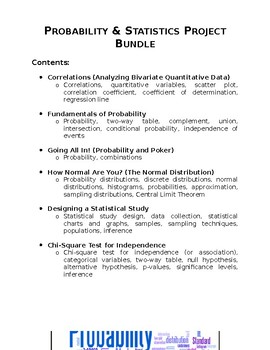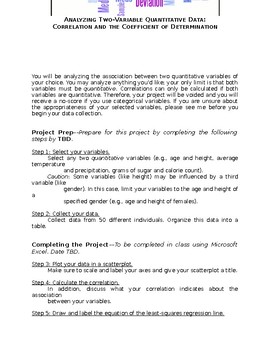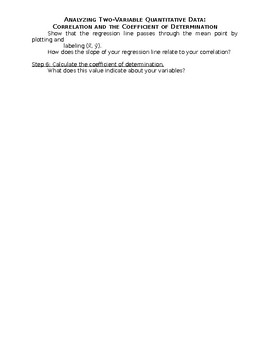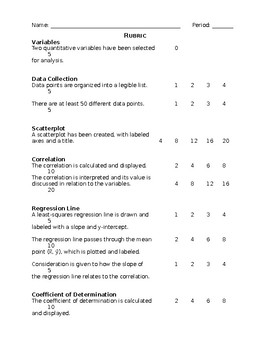Probability & Statistics Project Bundle
Room 423
23 Followers
Grade Levels
9th - 12th
Subjects
Resource Type
Standards
CCSSHSS-ID.A.1
CCSSHSS-ID.A.2
CCSSHSS-ID.A.3
CCSSHSS-ID.A.4
CCSSHSS-ID.B.5
Formats Included
- Word Document File
Pages
15 pages
Room 423
23 Followers
What educators are saying
This was a great end of unit lesson and allowed student to explore and discover connections. Thank you for the variety in projects!!
This was a great addition to my classroom! I broke this up per unit, and they completed the projects after completing unit assessments. If there an answer key?
Description
A bundle that contains six different projects for a Probability & Statistics high school course. This bundle includes:
- Correlations (Analyzing Bivariate Quantitative Data)
- Fundamentals of Probability
- Going All In! (Probability, Combinations, and Poker)
- How Normal Are You? (The Normal Distribution)
- Designing a Statistical Study
- Chi-Square Test for Independence
These projects are designed to engage students in authentic, hands-on, performance-based tasks. For each of these projects, students create a poster or presentation to summarize, describe, and display their findings. In addition, these projects are easily adaptable to each teacher's unique classroom environment.
Total Pages
15 pages
Answer Key
Rubric only
Teaching Duration
N/A
Report this resource to TPT
Reported resources will be reviewed by our team. Report this resource to let us know if this resource violates TPT’s content guidelines.
Standards
to see state-specific standards (only available in the US).
CCSSHSS-ID.A.1
Represent data with plots on the real number line (dot plots, histograms, and box plots).
CCSSHSS-ID.A.2
Use statistics appropriate to the shape of the data distribution to compare center (median, mean) and spread (interquartile range, standard deviation) of two or more different data sets.
CCSSHSS-ID.A.3
Interpret differences in shape, center, and spread in the context of the data sets, accounting for possible effects of extreme data points (outliers).
CCSSHSS-ID.A.4
Use the mean and standard deviation of a data set to fit it to a normal distribution and to estimate population percentages. Recognize that there are data sets for which such a procedure is not appropriate. Use calculators, spreadsheets, and tables to estimate areas under the normal curve.
CCSSHSS-ID.B.5
Summarize categorical data for two categories in two-way frequency tables. Interpret relative frequencies in the context of the data (including joint, marginal, and conditional relative frequencies). Recognize possible associations and trends in the data.





